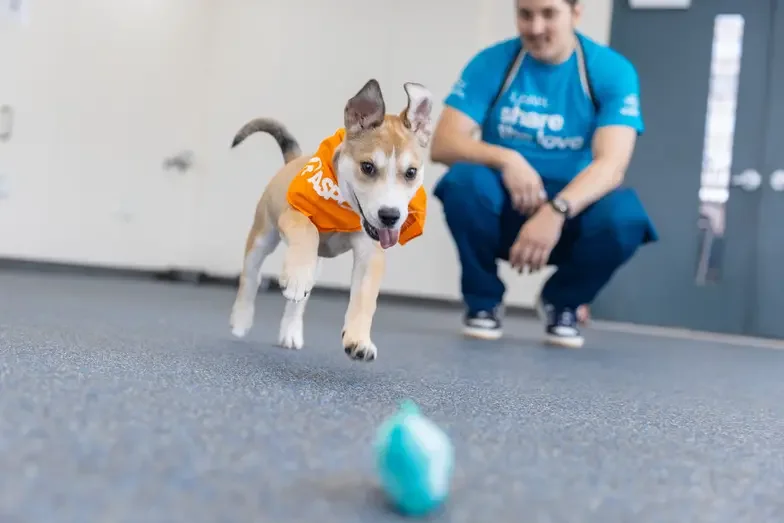5 Essential Behavioral Welfare Areas for Shelter Animals in Quarantine or Isolation

Shelter animals that require isolation or quarantine are at higher risk for a poor quality of life. During this time, which can be prolonged depending on the condition. Often, their opportunities for positive human interactions are also reduced, and they may not have access to outside activities and may need invasive medical treatments.
These animals need a different approach to maintain behavioral welfare during their time in isolation or quarantine. This requires strong collaboration and communication between medical, behavior and operational teams in the shelter. While taking steps to better address behavioral needs of animals while in isolation or quarantine, it’s critical to also take the necessary steps to prevent disease spread – making the use of PPE and appropriate sanitation techniques even more important.
Shelters must be able to provide both medical and behavioral support during infectious disease outbreaks. Before deciding to proceed with any treatment plan, but especially one that requires isolation or quarantine, these considerations must be evaluated. If a shelter cannot meet the behavioral needs of an animal while in quarantine or isolation, they do not have the capacity to provide such care and will need to consider alternative options.
-
Housing
-
If possible, send the animal into foster care.
-
Utilize double-compartment housing to both reduce the risk of fomite transfer to animal care staff and ensure the animal has separation of eating, resting and elimination areas.
-
Use larger kennels to increase choice within the environment and for human interaction.
-
Ensure separation of species and predator-prey animals.
-
Consider keeping littermates or bonded pairs together (need to weigh risks of exposure vs. mental deterioration).
-
Enrichment
-
Increase the number of items within the enclosure.
-
Provide an increased choice of enrichment on rotation.
-
Ensure positive human interactions outside of treatments.
Sensory Enrichment Examples |
|
|---|---|
| Feeding | slow feeders, chew toys, treat filled toys, lick mats |
| Scent | diffusers, sprays, nosework |
| Auditory | classical music, audiobooks, nature sounds, white noise |
| Visual | perches, windows, automatic laser pointer, videos |
| Tactile | stationary brushes, soft bedding, scratchers |
-
Treatments
-
Utilize Fear Free handling.
-
Create positive treatment experiences by pairing treatments with treats and/or enrichment.
-
Consider the use of short-term psychopharmaceuticals.
-
Set up the environment for voluntary treatment participation.
Voluntary Treatment Examples |
|
|---|---|
| Oral meds | put in food and/or play a game where they get multiple treats and don't know which one has the oral med. |
| Injections | try to use lick mats, lickable cat treats, or other high value reinforcers; give the food, give the injection, let them finish the food. |
-
Routine
-
Have consistent handlers to limit disease transmission and develop trust.
-
Feed and clean at the same times every day.
-
Quality of Life
-
Daily monitoring must include both physical health and behavioral welfare. See holistic quality of life assessment.
Additional Resources
-
Stress Reduction & Enrichment for Shelter Cats Webinar: Discover how to reduce feline stress and implement a behavioral wellness program for the cats in your care. Learn to recognize signs of feline stress and create protocols, housing and enrichment opportunities to improve the welfare and adoptability of your feline guests. You can listen to this webinar at your convenience, any time, 24/7.
-
7 Ways to Reduce Stress When Handling Dogs and Cats Online Course: This is the fourth course in our Everyone Is on the Behavior Team online series, which provides tools to assist you with getting animals exactly where you want them to be while keeping them safe and comfortable.
We have lots more on this subject:
